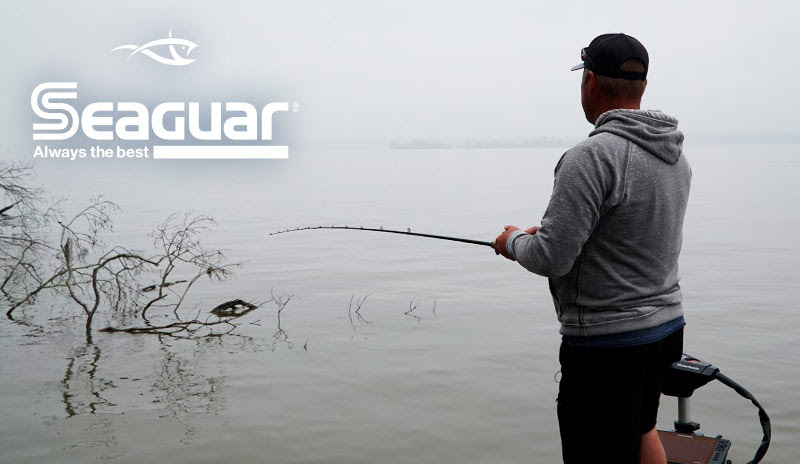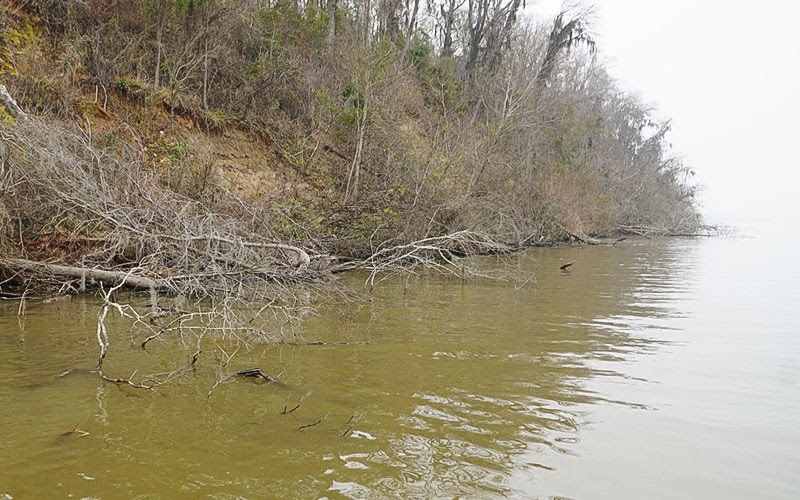
One key to success at the beginning of the year is being willing to go where the fish are, which is often in the thickest cover. Whether it is a rocky shoreline, a line of laydowns, a riprap bank, or submerged trees, bass gravitate to this type of structure and cover, looking for an easy meal before they complete their annual spawning ritual.
Major League Fishing pro Luke Clausen is one of a small group of anglers with both a Bassmaster Classic and FLW Forrest Wood Cup win to his name, and he focuses his effort during the spring on the hard cover. He believes the vast majority of bass in a lake will be around the nastiest cover in the area, so he ups the odds in his favor by attacking the thick stuff.
Hitting the Hard Cover
It's no secret that bass like to hide around cover while patiently waiting for their next meal to move past them. They are ambush predators by nature, after all. Early in the year, Clausen gravitates towards hard cover as he believes bass prefer it to vegetation and featureless shorelines.
"It could be throwing a squarebill along a riprap bank with 12-pound AbrazX®, casting a spinnerbait around fallen trees with 17-pound, or flipping and pitching laydowns with 20-pound test," Clausen begins. "When bass are first starting to move up in the spring, they are always going to gravitate to some sort of hard cover."
Fishing around these objects doesn't come without some risks when it comes to losing lures and getting snagged, but Clausen feels it is the only option.
Seaguar AbrazX fluorocarbon is a line that has been tested as two times as abrasion-resistant as other fluorocarbon lines on the market. So, whether it is cranking shallow cover, throwing a spinnerbait around laydowns, or pitching stumps and other submerged wood, having an abrasion-resistant line is paramount.
"Most times, when you make a cast, your line is going to be the first thing to hit the cover," Clausen begins. "Before your lure reaches it, your line has already taken the brunt of it. You want your crankbait to be deflecting off of rocks or for your spinnerbait to hit that laydown because that's where the strikes often occur, and long before your line hits that object, your line is already rubbing against it or wrapping around it."
"Using AbrazX in these situations gives me more confidence that my line will hold up to the abuse," adds Clausen. "If I could only have one line in the spring, it would be Seaguar AbrazX," Clausen says. "It is the line of springtime bass fishing."
Don't Always Rush Shallow
When it comes to springtime bass fishing, shallow water gets most of the attention. As bass flood the banks to spawn, most bass anglers are right behind them. Clausen will target these shallow-water bass but doesn't go all-in on the skinny water bite.
"Shallow fish in the spring can be some of the easiest to target, but those are also the most pressured fish," he theorizes. "The thing to keep in mind is that not all bass spawn at once. That's Mother Nature protecting fish because if they all spawned at the same time, it would risk the population if there was something crazy happening with the weather. Even when a big wave of fish is spawning, there are still fish sitting out in more open water in a winter or pre-spawn pattern."
For these bass that are later to the spawning party, Clausen still sticks by his AbrazX is the "line of spring" mantra as he targets nasty cover and takes advantage of the unparalleled abrasion resistance of Seaguar AbrazX.
There are many choices for fluorocarbon lines, but for fishing thick and nasty cover, Seaguar AbrazX fits the bill for so many situations. It was specifically developed for fishing heavy cover and has become known as "the line of spring" for those who choose to rely on it.
Copyright © 2013-2025 WesternBass.com ®







 Advertising
Advertising